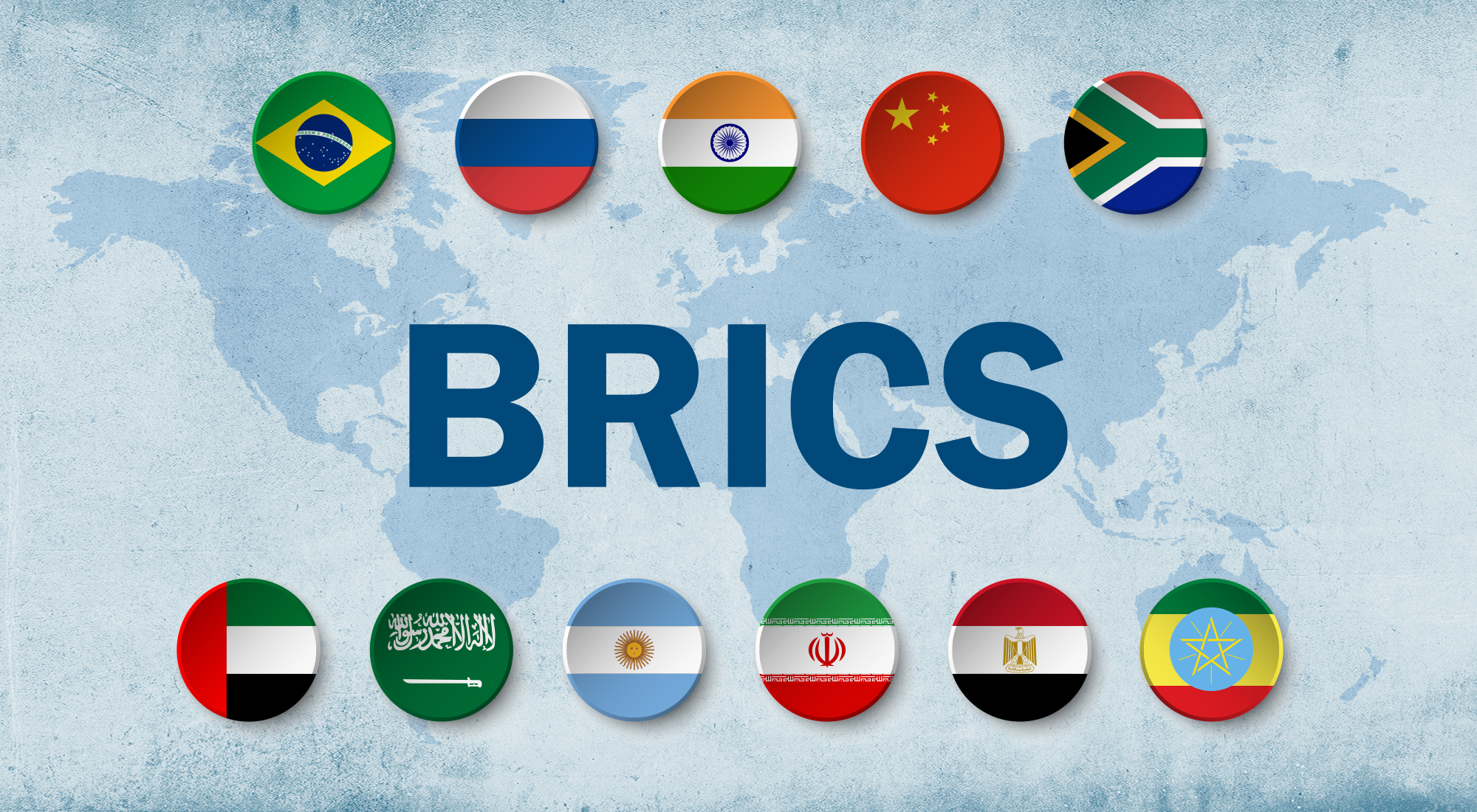As of late 2025, a growing number of countries are reducing their reliance on the US dollar, a move that is reshaping global trade, finance, and geopolitics.
While no major economy has completely "dropped" the US dollar, many nations, especially in the CIS and emerging markets, are actively reducing their dependence on the dollar in trade settlement, foreign reserves, and bilateral currency swaps.
This global shift, known as de-dollarisation, is driven by various economic, political, and strategic factors. This movement is reshaping international trade, finance, and geopolitical alliances.
In this comprehensive analysis, we'll explore which countries are decreasing their reliance on the US dollar, their reasons for doing so, and the broader consequences for the global economy.
What "Dropping the US Dollar" Really Means

Before listing countries, it's crucial to clarify that no country (that has an international presence) has eliminated the US dollar from all usage. The change typically occurs in trade invoicing, foreign reserves, bilateral currency settlement, or debt issuance.
Most have reduced dependence, shifted portions of trade or reserves, or implemented partial de-dollarisation, rather than fully abandoning the dollar. A more accurate framing distinguishes:
Full drop/abandonment (rare)
Partial de-dollarisation (trade allocation, reserve shifts)
Reserve diversification (reducing USD share over time)
Thus, when we say "dropped the dollar," we often mean "significantly reduced dependency or replaced it in certain functions."
What Countries Dropped the US Dollar? Complete List by Category
| Category |
Countries / Regions |
Latest Data Highlights |
| Full drop / abandonment |
North Korea, Iran, Venezuela, Cuba |
All have ongoing black-market USD use, but official policy is anti-dollar. |
| Partial de-dollarisation |
Russia, China, India, Brazil, Iran, CIS states, Nigeria/Africa |
USD still used for private trade and reserves, but local currency settlements growing. |
| Reserve diversification |
Brazil, Russia, China, India, Saudi Arabia, Turkey |
USD share in reserves declining; euro, gold, and yuan allocations rising. |
1. Full Drop or Abandonment of the US Dollar (Rare)
Few countries have truly and fully abandoned the US dollar for trade, reserves, or as a transaction currency. A "full drop" signifies official policy with almost no dollar utilisation in banking, central bank holdings, and trade.
Examples:
North Korea: Not connected to the global dollar system; all trade is denominated in local currencies or barter, due to sanctions and isolation.
Iran (partially): Officially strives to drop the dollar since 2018, settling oil and strategic trades in other currencies, but still uses the dollar in unofficial/black-market circuits due to necessity.
Venezuela: Announced intentions to abandon the US dollar for oil and public exchanges, yet black/parallel markets still show substantial USD utilisation.
Cuba: Moved to minimise dollar use in banking and trade; most international trade uses euros, Canadian dollars, or other currencies.
Note: No major G20, BRICS, or regional economic power has fully dropped the dollar due to liquidity and accessibility hurdles.
2. Partial De-dollarisation (Trade Allocation, Reserve Shifts)
Most commonly, countries diversify or reduce the dollar's role, shifting parts of trade and some reserves to other currencies:
1) Russia
Action: Massive cut in USD reserves; bilateral trade in rubles & yuan via the SPFS system.
Context: Following Western sanctions, Russia's non-USD transactions surged sharply
2) China
3) India
Action: Utilises rupees/rubles in trade with Russia & UAE; local-currency settlement pilot underway.
Context: India publicly denies a "full shift," yet trade in currencies other than USD is on the rise. [1]
4) Brazil
5) Iran
6) CIS / Former Soviet States (Belarus, Kazakhstan, Kyrgyzstan, Armenia, Azerbaijan, Moldova, Tajikistan, Turkmenistan, Uzbekistan, Ukraine)
Action: Increasing intra-bloc trade in national currencies.
Context: Some still hold USD-heavy reserves, reflecting uneven adoption.
7) Nigeria / Africa
3. Reserve Diversification (Reducing USD Share Over Time)
This is mostly seen in central bank reserve management, with countries reducing US dollar share in favour of euros, yuan, gold, and local currencies:
Examples:
Brazil: USD share of reserves fell from ~83 % (2015) to < 60 % (2025).
Russia: Shifted post-2014 toward gold, euro & yuan.
China: Now < 60 % USD reserves; euro and gold holdings rising.
India: Gradual reallocation toward euro, yen & gold.
Saudi Arabia: Via PIF & SAMA, increasing non-USD assets.
Turkey: Prefers gold and repo allocations over USD treasuries.
Understanding De-Dollarisation

De-dollarisation implies reducing dependence on the US dollar for trade, reserves, or financial systems, often to gain autonomy or mitigate sanctions risk.
For context, the BRICS bloc (Brazil, Russia, India, China, South Africa) has led this trend. In 2025, BRICS expanded to include Egypt, Saudi Arabia, the UAE, and Ethiopia, strengthening its influence on global trade.
In BRICS trade, the renminbi constitutes approximately 50% of intra-BRICS transactions. However, worldwide, it represents only around 2% of payments.
Motivations Behind De-Dollarisation

1. Economic Sanctions and Political Pressure
Countries like Russia and Iran have faced extensive US sanctions, prompting them to seek alternatives to the dollar to safeguard their economies. By conducting trade in local currencies or other major currencies, they aim to reduce the impact of such sanctions.
2. Diversification of Foreign Exchange Reserves
Central banks are diversifying their reserves to include a mix of currencies, such as the euro, Chinese yuan, and gold, to mitigate risks associated with holding large amounts of US dollars.
3. Development of Alternative Payment Systems
To decrease dependence on US-controlled financial systems like SWIFT, nations are creating their own payment infrastructures. For example, Russia has launched the System for Transfer of Financial Messages (SPFS), while China has developed the Cross-Border Interbank Payment System (CIPS).
4. Emergence of Digital Currencies
The rise of central bank digital currencies (CBDCs) offers countries a new avenue to conduct international transactions without the US dollar. China's digital yuan is a prominent example, and other nations are exploring similar initiatives.
How Far Can De-Dollarisation Go? Constraints & Limitations

De-dollarisation faces serious friction:
Network effects & liquidity dominance: USD markets remain deep and liquid.
Trust & stability: Alternatives lack the global confidence USD enjoys.
Transition costs: Switching systems and hedges is expensive.
Access risks: Abandoning USD can limit capital market access.
Asymmetric adoption: Many bilateral agreements still revert to USD in supply chains.
Example: Even as Russia and China expand non-USD trade, their foreign reserves and export invoicing still depend on USD liquidity, showing that de-dollarisation is partial, not absolute.
Hence, de-dollarisation is likely to remain gradual, selective and partial, especially for major economies. [3]
Latest Data Updates & Nuanced Claims
1) Global USD Share in Reserves is Falling
IMF data indicate a decline from approximately 71% (1999) to about 57.3% (2024); certain reports estimate 47% in 2025.
2) Foreign Central Banks Cut US Treasury Exposure
Holdings decreased to $2.88 trillion in mid-2025, the lowest level since 2023.
3) Asset Managers Rebalance to Euro and Yuan
Institutions aim to spread FX risk, but complete de-dollarisation seems improbable in the near term.
Implications for the Global Economy
1. Shift Toward a Multipolar Currency System
As more nations diversify away from the USD, a multi-currency system is emerging, with the euro, yuan, and gold playing larger roles.
2. Impact on US Economic Influence
Reduced dollar demand could gradually impact US financing costs and diminish the leverage of US sanctions, but the transition is slow, not sudden.
3. Market Volatility & Risk
De-dollarisation increases currency volatility, especially in emerging markets experimenting with non-USD trade settlements.
Frequently Asked Questions
1. Which Countries Have Dropped the US Dollar Entirely?
None has fully eliminated it; many have only reduced reliance (e.g., Russia, China, CIS nations).
2. Will De-Dollarisation Collapse the US Dollar?
Unlikely as the dollar remains deeply entrenched and globally trusted.
3. Why Would a Country Drop the Dollar?
To reduce sanction vulnerability, transaction costs, and currency risk, and increase economic sovereignty
4. Which Currency Is Replacing the Dollar?
No one currency is universally accepted. Many countries favour the yuan, rupee, ruble, or digital currencies in various bilateral deals.
Conclusion
In conclusion, de-dollarisation is evolving not as a sudden abandonment but as a gradual diversification of global finance.
As of 2025, countries such as Russia, China, and new BRICS members are leading this shift. However, the US dollar remains the backbone of global liquidity and confidence.
The world's financial order is becoming more plural, but the dollar's supremacy, while challenged, is far from over.
Disclaimer: This material is for general information purposes only and is not intended as (and should not be considered to be) financial, investment or other advice on which reliance should be placed. No opinion given in the material constitutes a recommendation by EBC or the author that any particular investment, security, transaction or investment strategy is suitable for any specific person.
Sources
[1] https://timesofindia.indiatimes.com/business/india-business/india-not-pursuing-alternative-to-us-dollar-for-global-trade-cea/articleshow/123820882.cms
[2] https://www.reuters.com/world/africa/african-trade-bloc-comesa-launches-digital-payments-system-2025-10-09/
[3] https://www.jpmorgan.com/insights/global-research/currencies/de-dollarization

























